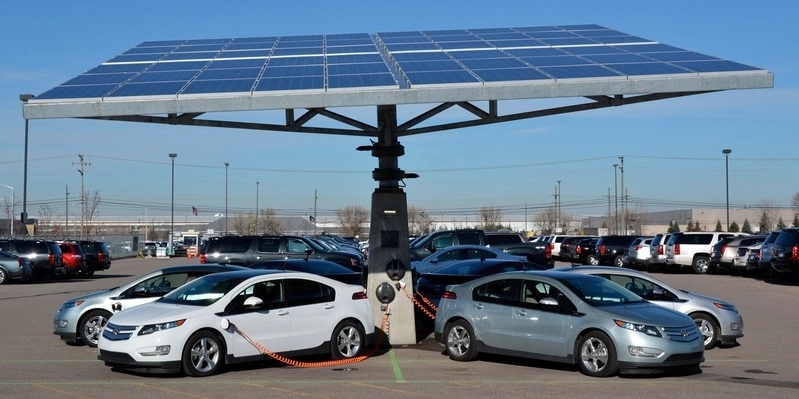
The progress of the renewable sector in Spain depends directly on the push for electric mobility.
This is explained by Kim Keats Martínez, Director at K4K Training & Advisory and EKON Strategy Consulting, who warns:
“High levels of green energy penetration only make sense if electricity demand grows proportionally.”
Without this synergy, he says, investments in the electricity grid and renewables could be compromised.
For Keats Martínez, the key is to promote the use of electric vehicles and the electrification of homes, which would help reduce the consumption of fossil fuels.
This type of change, he says, would allow the country to move towards its decarbonisation and energy saving goals.
Especially when you consider that one third of the country’s total energy consumption is due to road transport.
“This percentage could be transformed into renewable consumption if the use of electric cars is promoted,” he says.
What are the challenges?
One of the barriers to a successful transition is charging infrastructure.
Keats Martínez points out that it is necessary to have accessible charging points and to simplify the complexity of their installation.
At the same time, he warns that in some areas the current distribution network cannot support the demand needed to cover the chargers, especially the fast ones.
“If you request a high-capacity connection, you will be charged much more, and if you lower the capacity, waiting times will increase when there are several vehicles charging,” he explains.
To solve this problem, he proposes integrating energy storage and photovoltaic sources in each charging station, which would facilitate the expansion of these points without overloading the network.
This approach would not only reduce dependence on general infrastructure, but would make these investments more cost-effective and reduce waiting times for users when “refuelling”.
“The important thing is to properly size the storage system to meet local demand,” he explains.
He adds: “This way, if one or two vehicles require charging, this can be done directly from the grid, but if demand increases with three or more cars, the storage system can supply the additional energy needed.”
In this context, he acknowledges that many investors still have doubts about the profitability of these systems, since they depend on a significant increase in the adoption of electric vehicles.
What is the solution?
Although there are incentives for installing charging points, it is essential that the focus is on encouraging the purchase of zero-emission cars.
The economist warns that in order to encourage the adoption of electric vehicles, it is crucial that the total cost of ownership decreases.
“For taxi drivers in Madrid, who travel many kilometres a day, the savings in fuel are significant, since the price of electricity per kilometre is much lower than that of petrol,” he explains.
However, he notes that the perception of the high initial cost of electric vehicles remains a barrier for many consumers.
“The Spanish are not supporting the objectives because it is expensive to do so,” he says.
And he emphasizes: “The real challenge is logistical and financial.”
In this context, the consultant proposes that the Government act by facilitating economic incentives that make this technology more accessible.
As well as promoting awareness campaigns aimed at promoting the use of zero-emission cars.
According to Keats Martínez, this would allow not only a greater penetration of renewables, but also a significant reduction in emissions in the sector.
This is part of the goal of the National Integrated Energy and Climate Plan (PNIEC), which aims to have 5.5 million electric vehicles in circulation by 2030.
This number represents 16% of the vehicle fleet projected for that date.
For Keats Martínez, the success of the PNIEC depends on generating sufficient demand to accompany the growth of renewable generation capacity in Spain.
“Without growing demand, investment in renewable energy is pointless and unprofitable,” he says.








